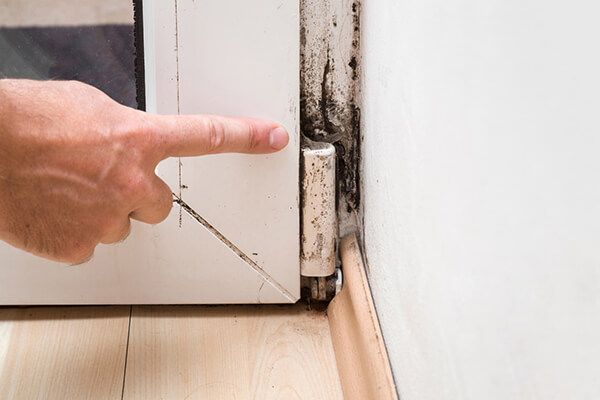Effective Blog Post Mold And Mildew Removal Solutions for Your Home
Mold development in homes can be a consistent issue, commonly requiring an organized method for reliable post-remediation services. From recognizing the elements that add to mold advancement to implementing appropriate cleansing techniques and wetness control procedures, the procedure can be elaborate yet critical for maintaining a healthy and balanced living setting. After mold remediation.
Comprehending Mold And Mildew Development Factors
The key variable adding to mold and mildew growth is wetness. Mold spores require moisture to germinate and thrive, making wet or damp environments highly susceptible to mold infestations.

In addition, air flow and light direct exposure can affect mold and mildew growth. Locations that do not have proper air flow and all-natural light are much more vulnerable to mold advancement. By addressing these aspects adequately, individuals can successfully mitigate mold development and guard their living environments.
Appropriate Mold And Mildew Cleaning Techniques
Using efficient cleaning techniques is vital in addressing and preventing the recurrence of mold contamination in indoor environments. The first action in appropriate mold cleaning is to have the damaged area to prevent the spread of spores to uncontaminated locations.

Carrying Out Wetness Control Actions
To effectively avoid mold development and contamination in interior settings, applying dampness control actions is paramount. Moisture is the primary element that fuels mold and mildew growth, making it crucial to manage humidity levels within the home. One effective measure is to use dehumidifiers to maintain indoor moisture degrees listed below 60%. In addition, making certain correct air flow in areas susceptible to moisture accumulation, such as kitchens and bathrooms, can help in reducing the threat of mold and mildew development. On a regular basis checking and repairing any leaks in plumbing, roofs, or windows is likewise essential in avoiding excess dampness build-up. Utilizing exhaust fans while food preparation or bathing, and enabling air circulation by maintaining furnishings slightly far from wall surfaces can aid in moisture control. In addition, using moisture-resistant materials in high-humidity locations, such as mold-resistant drywall and paints, can be helpful. By carefully executing these dampness control procedures, property owners can effectively minimize the possibility of mold and mildew recontamination and preserve a healthy interior environment.
Making Use Of All-natural Removal Solutions
After effectively executing moisture control actions to protect against mold and mildew growth in interior atmospheres, property owners can now explore the performance of all-natural removal services in maintaining a healthy living room. All-natural remediation solutions use environmentally pleasant techniques to combat mold and mildew and mildew, making them a preferred option for those looking for non-toxic alternatives. By integrating these natural removal solutions right into their cleaning regimens, homeowners can successfully combat mold and mildew development while advertising a much healthier interior environment for themselves and their family members.

Maintaining a Mold-Free Atmosphere
On a regular mold removal gig harbor basis evaluating areas prone to mold and mildew growth, such as shower rooms, kitchen areas, cellars, and attics, is crucial. Correct air flow in locations with high humidity degrees is likewise crucial to stopping mold and mildew development.
Additionally, preserving cleanliness in the home is crucial for mold and mildew avoidance. Routinely cleaning and cleaning surfaces, carpets, and upholstery can help eliminate mold spores before they have a possibility to clear up and multiply. Making use of mold-resistant products for construction materials and furnishings can better assist in creating a mold-free setting. Keeping indoor plants in check and ensuring proper drainage in exterior landscaping can reduce wetness build-up, decreasing the probability of mold infestations. By pop over to this web-site complying with these aggressive upkeep methods, house owners can successfully support a mold-free space.
Verdict
In conclusion, it is vital to resolve mold growth elements, use proper cleansing techniques, apply moisture control measures, use natural removal solutions, and preserve a mold-free atmosphere in order to successfully deal with blog post mold and mildew remediation in your home - Post Mold remediation cleaning. By following these strategies, you can stop mold from persisting and make certain a healthy living atmosphere for you and your family
The main element contributing to mold and mildew development is wetness. Mold and mildew spores require moisture to sprout and prosper, making moist or humid environments highly at risk to mold and mildew infestations.To successfully prevent mold and mildew development and contamination in indoor settings, go to this site carrying out dampness control measures is paramount. Additionally, guaranteeing proper ventilation in areas vulnerable to moisture build-up, such as washrooms and kitchens, can help minimize the threat of mold and mildew growth.After effectively implementing wetness control actions to protect against mold development in indoor environments, property owners can currently explore the performance of natural remediation solutions in preserving a healthy living room.
Comments on “Vital Steps After Mold Remediation”